OVERVIEW
Curo, patient home recovery guide for a stress-free and better recovery
Patients going home after hospitalization face many challenges that often lead to readmissions and ER visits for non-urgent issues. About half are preventable and result from poor discharge planning.
This project intends to leverage design thinking to facilitate a fluid transfer of discharge information to patients and generating higher treatment outcomes and satisfaction with care.
Curo, patient home recovery guide for a stress-free and better recovery
Patients going home after hospitalization face many challenges that often lead to readmissions and ER visits for non-urgent issues. About half are preventable and result from poor discharge planning.
This project intends to leverage design thinking to facilitate a fluid transfer of discharge information to patients and generating higher treatment outcomes and satisfaction with care.
Curo, patient home recovery guide for a stress-free and better recovery
Patients going home after hospitalization face many challenges that often lead to readmissions and ER visits for non-urgent issues. About half are preventable and result from poor discharge planning.
This project intends to leverage design thinking to facilitate a fluid transfer of discharge information to patients and generating higher treatment outcomes and satisfaction with care.
CURRENT PATIENT JOURNEY
OVERVIEW
A patient's journey starts with the day they were told about the problem and that they needed surgery. After consultation, pre-hospitalization visit, surgery to the day of discharge a patient has gone through tremendous stress on both mind and body. During the discharge process, the hospital care team has to go through the discharge plan with the patient and answer any question they might have. Patient leaves the hospital with a discharge summary outlining do's and don'ts after surgery, medication lists, follow up schedule, hospitalization summary etc. This discharge communication is often rushed coupled with poor handoff leaving patients and caregivers submerged in lengthy paperwork.
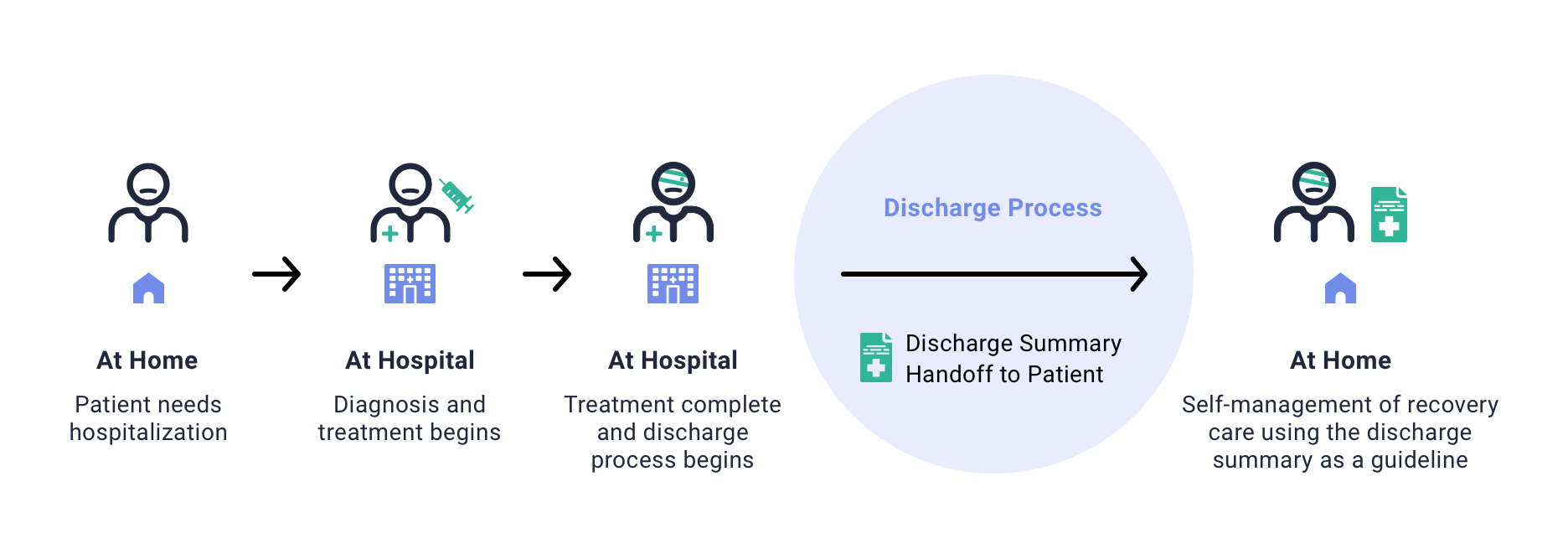
THE PROBLEM
Poor discharge communication and coupled with the expectation that patients will remember critical information poses a steep challenge for patients going home after hospitalization leading to readmission for preventable issues.
PATIENT PAIN POINTS

- Discharge summary is verbose and uses medical jargon.
- Insufficient understanding of diagnosis and treatment.
- Medication errors like missing or taking wrong medication.
- Forgetful and confused about do's and don't after surgery.
- Lack at home support & guidance from medical team.
- Delayed or missed follow up appointments.
- Discharge summary is verbose and uses medical jargon.
- Insufficient understanding of diagnosis and treatment.
- Medication errors like missing or taking wrong medication.
- Forgetful and confused about do's and don't after surgery.
- Lack at home support & guidance from medical team.
- Delayed or missed follow up appointments.
THE RATIONALE
Poor discharge communication can cripple treatement efforts and weaken patient confidence and satisfaction with the care received.
Of the average 15% 30-day readmission rate, a significant number of patients are coming back to the ER for non-urgent issues.
On an average 25% of readmissions occur within the first 30-day period, 9% - 48% hospital readmissions are preventable.
1 in 5 hospitalizations is complicated by post discharge events like adverse drug events, nosocomial infections, procedural complications etc.
THE OPPORTUNITY
"The more patients are involved in their care, the higher is their adherence to the treatment and their satisfaction with the care and outcome."
- Rydeman & Tornkvist, 2010
There is a care transition period from hospital illness management to self-management. This transition period can lead to unnecessary risks like inadequate preparation prior to leaving the hospital. Patients engaged in self-management have better health outcomes and increased self-efficacy.
THE SOLUTION
Introducing a mobile application designed to actively engage patients in self-recovery and improve patient care by providing comprehensible discharge information, recovery management tools and enabling remote patient monitoring to catch warning signs sooner to reduce ER visits and readmissions.
PRODUCT HIGHLIGHTS

Making discharge instructions uncomplicated, manageable and easy to follow
Discharge summary is long and complicated. Curo makes the discharge summary straightforward and presents relevant information to patients in a manageable and easy to follow daily plan.
The information is broken down into the following parts.
Symptoms & signs - know what’s normal and signs to look out for.
Checklist of daily tasks - medication and activity management.
Do’s and don’ts for recovery - learn about post surgery exercise, diet, driving, wound care and bath guidelines.
Daily Health Check - Track recovery and detect potential risks early
Patients are susceptible to nosocomial and other infections after surgery. Hence, the app provides a way for patients to track their recovery and gives them tips on better self-care.
The daily health checks comprise of 5 to 10 questions depending on the type and complexity of patients recovery plan. Each question will be designed by the medical team that help detect infections and track recovery progress. At the end of the questions, the patient receives a recovery score and relevant tips.
In the user profile, patients can see a visualization of the recovery scores and view past daily health checks. User profile also houses an abbreviated discharge summary.
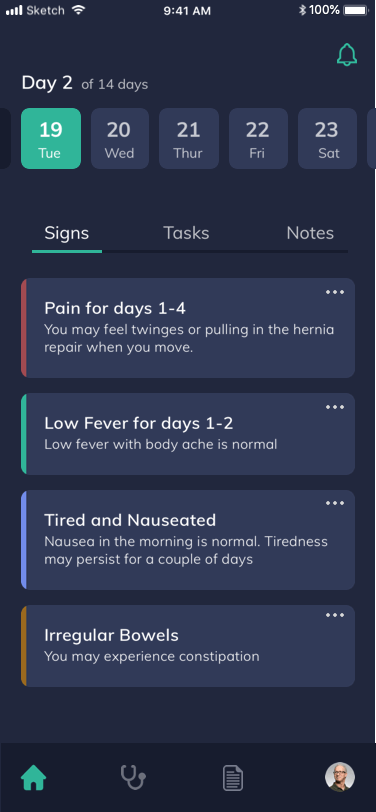

Be Notified: Reminders for Medication, Tasks and Appointments
Patients have difficulty adhering to the recovery schedule of timely intake of medicines, regular exercise and follow-ups with care providers. Neglecting or falling to follow these recovery metrics are major triggers in post discharge complications.
Receiving push notifications for recovery tasks and appointments helps patient intake timely medications, keep follow-up appointments and stay on task with exercise and other recovery metrics.
Be Informed and Manage Follow-ups
Patients well informed and conscious about their condition are more likely to make better decisions about self-care. With that insight, the knowledge center is built to educate patients about diagnosis and treatment procedures.
Increased visibility into follow-up schedules helps patients stay on top of any forthcoming appointments. It will also help manage these appointments by providing ways to reschedule and view location of the appointment.

VISUAL DESIGN
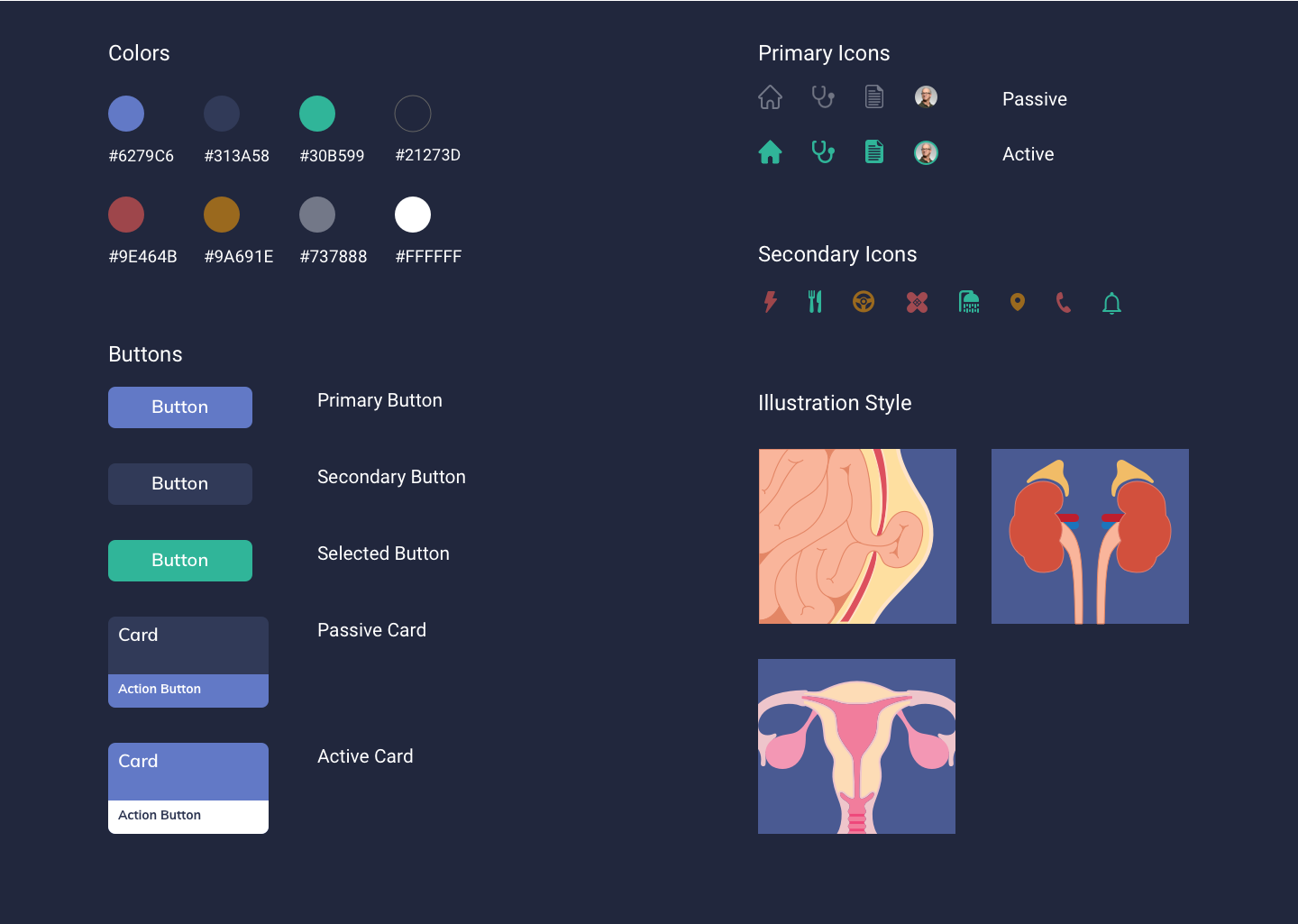
INFORMATION ARCHITECTURE
The application provides patients with a plan for each day from the first day at home after surgery to the last day of a recovery plan which can be 1 week or longer. The below architecture displays the key features and pathways that the patient will interact with.
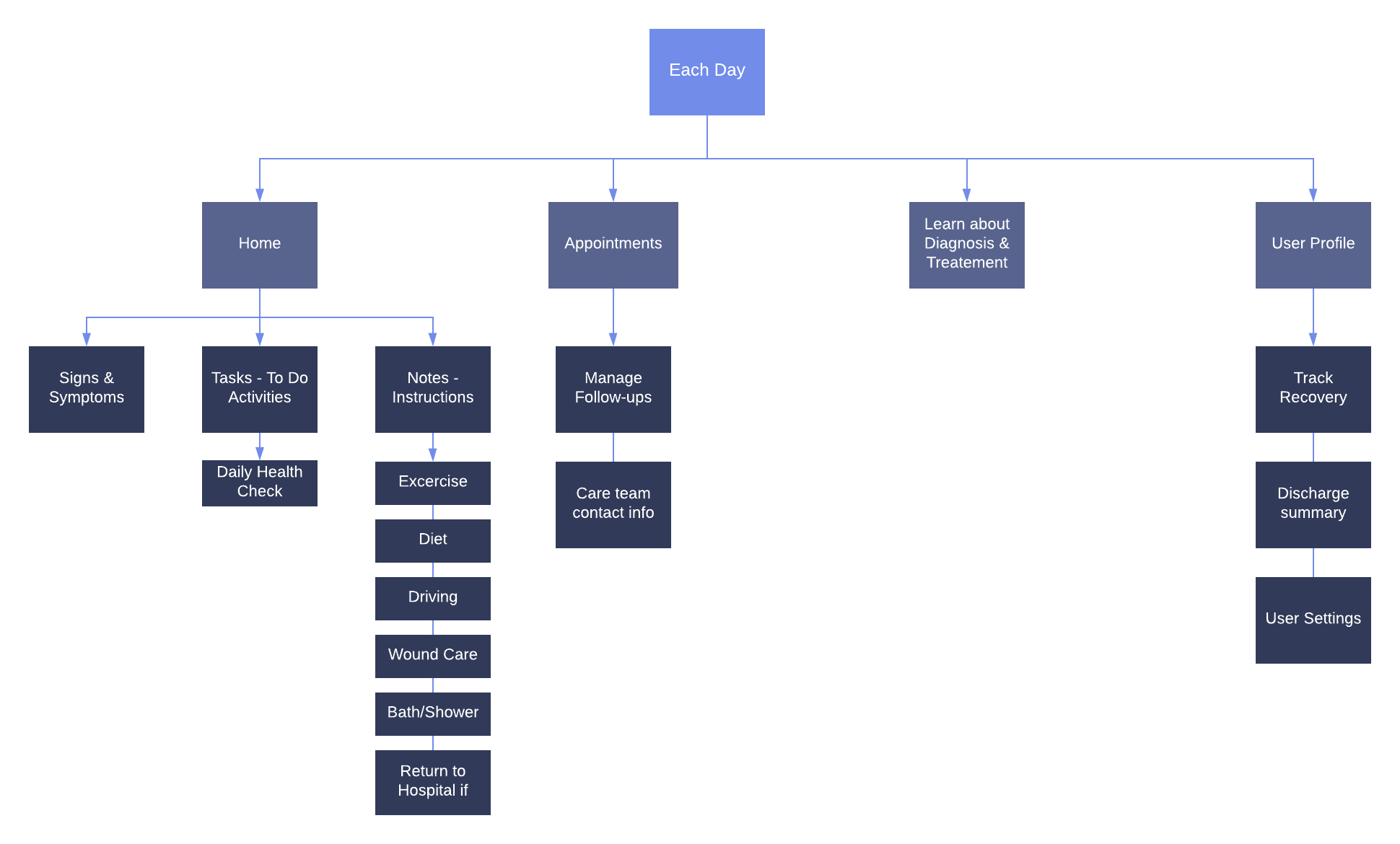
ACCESSIBILITY EXPLORATION
Accessibility focuses on how a disabled person accesses or benefits from a site, system or application. A large portion of surgical procedures are performed on adults aged 55 and above who maybe suffering from impaired vision after surgery. The below screens showcase the original design, design with larger or magnified view, and a light/white version with higher contrast level.

UNEXPLORED TERRITORIES
Research voice interactions and intelligent voice assistant for hands free and accessible interaction with the application.
Introducing a buddy system for patients. A buddy or a caregiver can support a patients physical and mental recovery.
Designing a sister application for the medical team that helps them view and track patient progress remotely.
Explore the merits of introducing virtual interaction with medical team without straining them.
CONCLUSION
A significant number of patients are coming back to the ER for non-urgent issues. This platform will enable healthcare providers to extend care beyond the wall of the hospital, monitor patient concerns in real-time and ultimately prevent ER visits and readmissions. Patients on the other hand can focus on their recovery rather than dealing with complex paperwork and archaic systems.
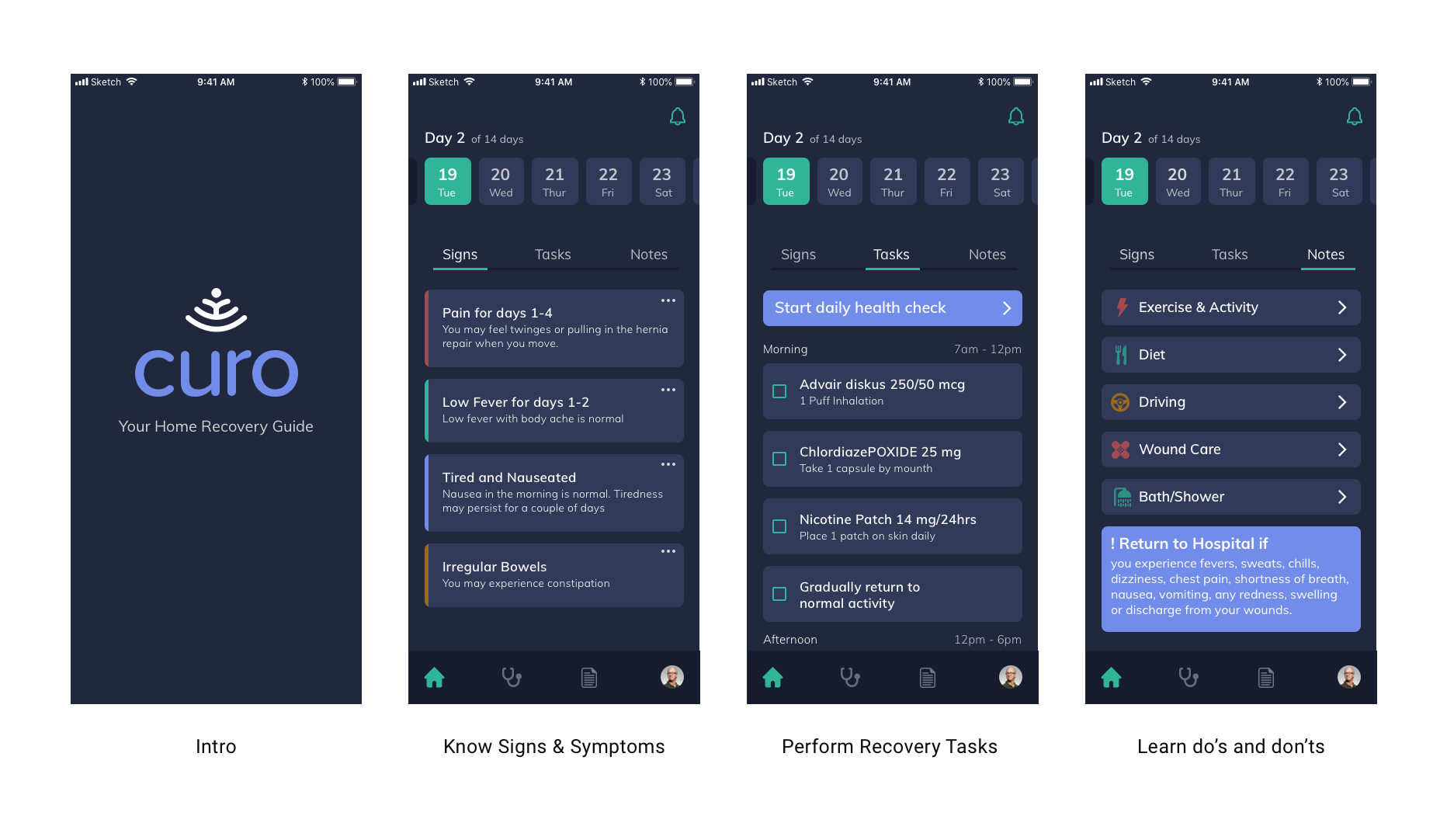
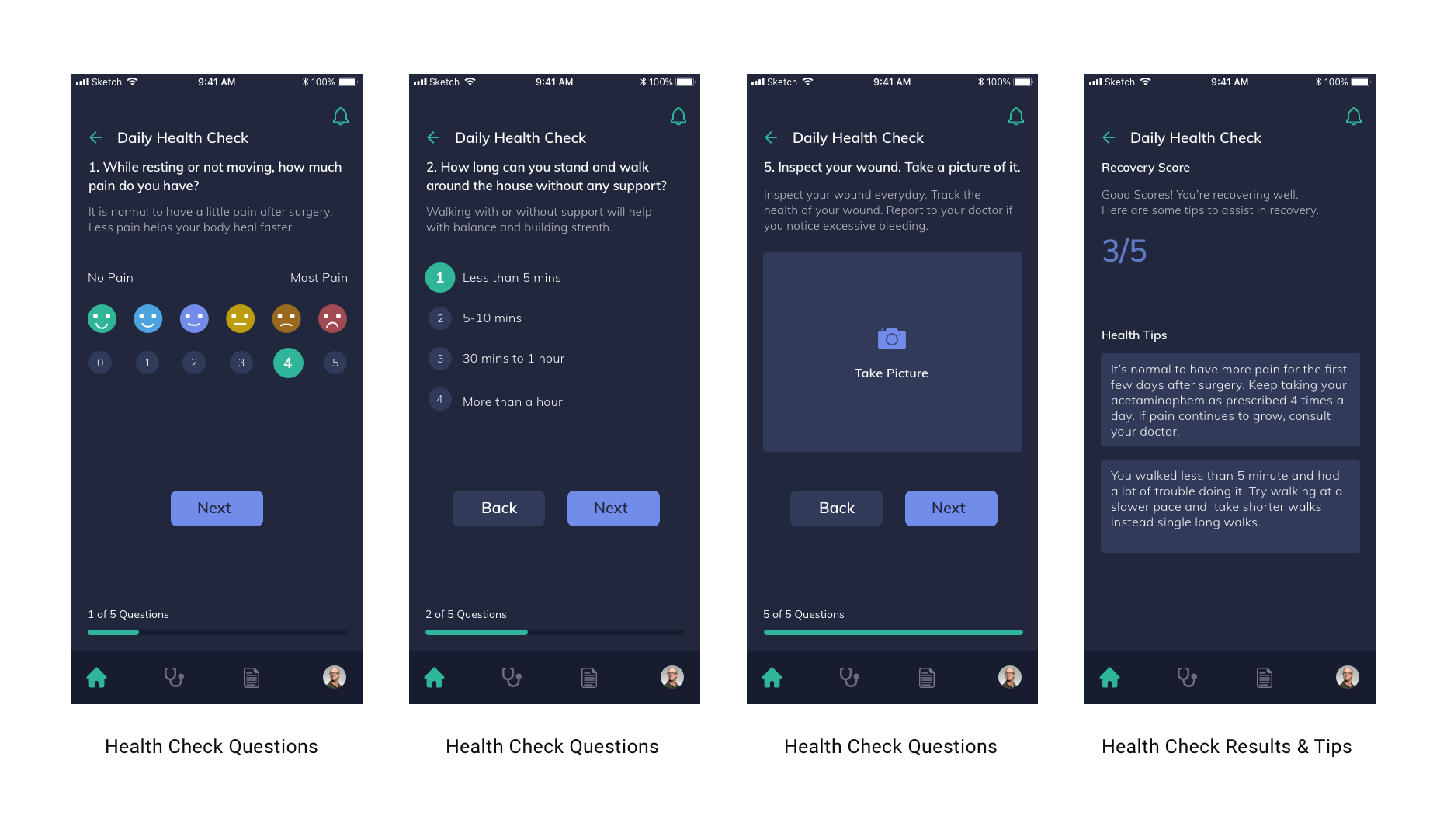
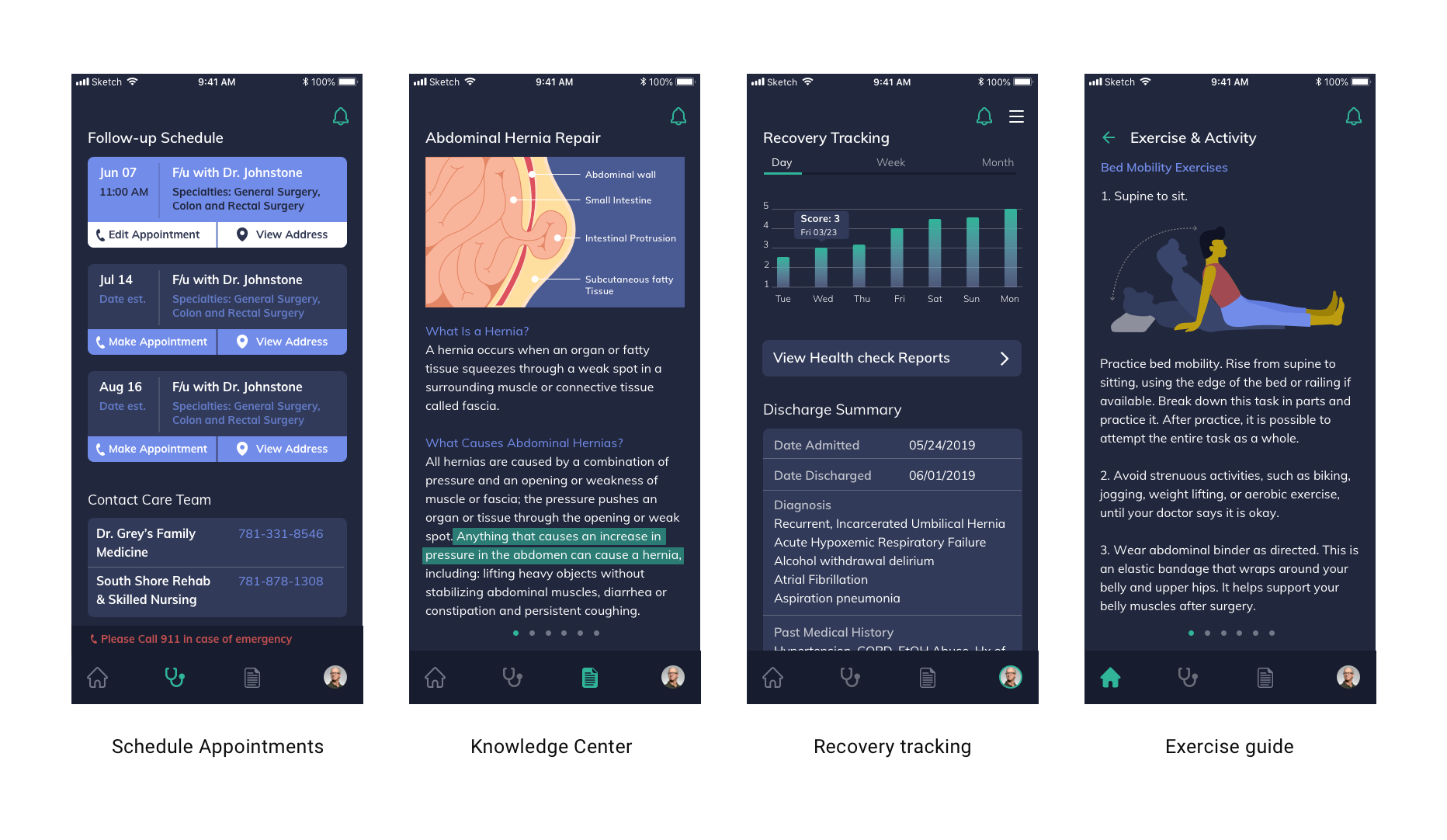
Thank you!
